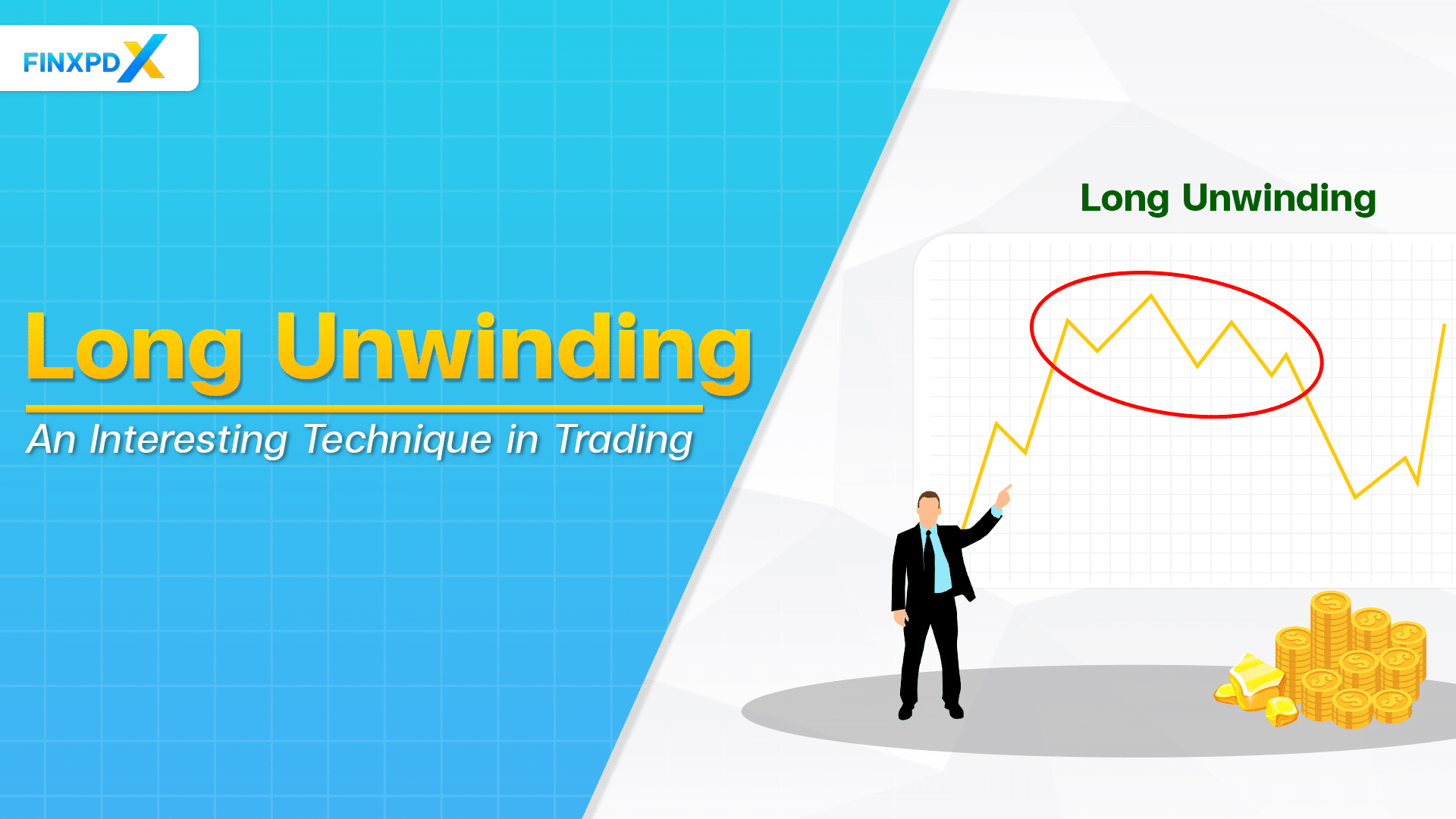In the world of stock market trading, there are various techniques and strategies that investors and traders employ to make informed decisions. One such technique is long unwinding, which involves closing a long position in a financial instrument.
This section will overview long unwinding and discuss its relevance in trading. We will explore how long unwinding affects the stock market and why it is an interesting technique for investors and traders.
What Is Long Unwinding in the Stock Market?
Long unwinding is a process that involves the closing of a long position in a financial instrument. It involves selling the shares or securities they previously had to exit their position, which directly impacts the trading activity of a particular security.
It’s important to note that long unwinding is only sometimes an adverse event. Traders may unwind their long positions to lock in profits from a rally or prevent losses during a market downturn. Long unwinding can also indicate a change in market sentiment or the arrival of new information that influences the investors’ outlook on a particular security.
Key Takeaways
- A long unwinding is the process of closing a long position in a financial instrument, often observed in the stock market.
- A long unwinding is commonly observed in the stock market and can significantly affect the open interest of a specific security.
- Understanding long unwinding helps investors and traders anticipate potential price movements and adjust their strategies accordingly.
- The unwinding process can lead to price fluctuations and affect market sentiment.
- Analyzing open interest data, volume patterns, and price movements can help identify potential instances of long unwinding.
How Unwinding Works?
Unwinding in trading refers to closing long positions, leading to increased supply and potential price drops of the security involved. It’s usually a response to profit-taking or risk management. This action can influence market sentiment, as widespread unwinding might signal a lack of confidence.
Traders can make more informed decisions by understanding the mechanics of the unwinding process and its influence on market dynamics. Successful traders use this knowledge to identify profitable trading opportunities and manage risks effectively.
How to Identify Long Unwinding?
Identifying long unwinding in the stock market is crucial for traders and investors to capitalize on potential opportunities and make informed trading decisions. Here are some practical tips to effectively identify and leverage long unwinding opportunities:
Analyze Open Interest Data
Open interest refers to the total number of outstanding contracts in the market. An increase in open interest accompanied by a decrease in the price of a security is a possible indicator of long unwinding.
Observe Volume Patterns
Significant increases in trading volume during a downtrend suggest long unwinding. Higher volumes during price declines indicate traders actively closing their long positions.
Track Price Movements
A consistent decline in the price of a security, especially when accompanied by heavy selling pressure, could be a sign of long unwinding. Traders are likely liquidating their positions, resulting in downward price movement.
What Happens After Long Unwinding?
After a long unwinding, several market dynamics can occur. These depend on the extent of the unwinding and the overall market conditions.
Price Decrease
As investors sell off their long positions, the reduced buying pressure can decrease the security’s price. This decline may be gradual or sharp, depending on the volume of positions being unwound.
Market Sentiment Shift
Long unwinding can signal to other market participants that investors are losing confidence in the continued upward movement of the security. This shift in sentiment may cause others to sell their positions.
Impact on Open Interest
The number of outstanding contracts, or open interest, typically decreases after long unwinding. This reduction indicates a potential weakening of the bullish trend in the market.
Increased Volatility
The unwinding process can introduce volatility into the market as prices fluctuate in response to the selling activity. This volatility can create both risks and opportunities for traders.
Potential for Reversal
After a significant long unwinding, the market may stabilize and find a new level of support, potentially leading to a reversal if new buying interest emerges.
Advantages and Disadvantages of Long Unwinding
As traders consider whether long unwinding is a suitable strategy for their investment approach, weighing the potential benefits and drawbacks is important. Understanding how this technique can impact different types of traders will provide a well-rounded perspective.
Advantages
Diversification
Long unwinding allows investors to diversify their holdings by closing out long positions in specific financial instruments. By reducing exposure to a particular security, investors can mitigate risks associated with market volatility.
Profit-Taking
Long unwinding presents an opportunity for investors to capitalize on profits by exiting from positions that have seen substantial price appreciation. This trading strategy allows them to lock in gains and reinvest in other promising ventures.
Improved Liquidity
The unwinding process can enhance market liquidity, making it easier for investors to buy or sell securities. Higher liquidity can result in better price execution and improved trading efficiency, benefiting both short-term and long-term investors.
Disadvantages
Losses
Long unwinding risks potential losses if positions are closed at a lower price than the purchase price. The timing and execution of the unwinding process are crucial factors that can significantly impact the financial outcome for investors.
Market Impact
Long unwinding on a large scale can substantially influence market dynamics and investor sentiment. As positions are closed, the increased selling pressure can drive down prices and create a negative domino effect, affecting other market participants.
Missed Opportunities
In some cases, this method may result in missed investment opportunities. By exciting positions, investors may forgo potential gains if the underlying security continues to appreciate after closing their positions.
Is Long Unwinding Good or Bad for Investors?
Long unwinding can be either good or bad, depending on the type of trader. For short-term traders who want to take advantage of market movements quickly, long unwinding allows them to lock in profits and invest in other assets. However, for long-term investors, this strategy might be risky. They could lose money if they close their positions too early or miss out on future gains if the security price rises after unwinding.
Differences Between Unwinding and Short Covering
In the trading world, two commonly used strategies are long unwinding and short covering. While both strategies involve adjusting positions in the stock market, they have significant differences.
| Aspect | Long Unwinding | Short Covering |
|---|---|---|
| Purpose | Long unwinding aims to exit long positions for profit or loss minimization. | Short covering Involves buying back borrowed shares to close short positions and avoid losses from rising prices. |
| Impact on Market | This strategy reduces buying pressure, potentially leading to price declines and impacting sentiment. | This strategy increases demand by covering short positions, which can drive prices higher. |
| Effects on Investors | This strategy indicates a potential downward price movement, causing investor uncertainty. | This strategy can cause a short squeeze, rapidly increasing prices and potential losses for short sellers. |
Conclusion
In summary, long unwinding is a process in the stock market where investors close their long positions, often leading to price decreases and shifts in market sentiment. This can lead to lower prices and changes in market sentiment. Knowing how long unwinding works and how to spot it by watching price and volume changes is important for smart trading. After unwinding, the market might become more volatile, and prices could either keep dropping or reverse direction.
Whether long unwinding is good or bad depends on the investor’s goals and the market conditions. It’s also important to understand how long unwinding differs from short covering, as they have different effects on the market. By applying these ideas, investors can make better decisions in the stock market.
FAQs
Long unwinding in the stock market refers to the process where investors close their long positions in a security.
As investors sell their shares, the increased supply in the market against a possibly constant or declining demand results in a downward pressure on prices.
Long unwinding is selling long positions, causing prices to fall. In contrast, short covering involves buying back securities to close short positions, often leading to a price rise.
While long unwinding responds to market perceptions, it can indicate a bearish sentiment. It could signal a downward market trend. However, it’s not a standalone predictor and should be considered alongside other market indicators.
As indicated by financial news and analyses, signs of long unwinding include increased selling volume, a consistent stock price decrease, and a change in market sentiment.
Related Articles:
- Market Mood Index: The Useful Tool for Market Prediction
- Dow Theory: How to Predicting Market Trends Effectively
- Nifty BeES: What You Need to Know Before Investing
- Margin Money Magic: Secrets to Smarter Trading
Read more: Stocks








